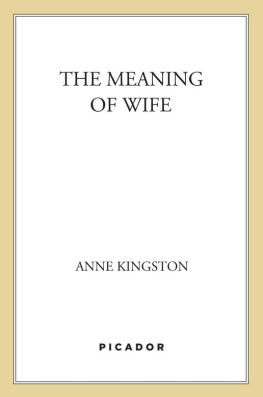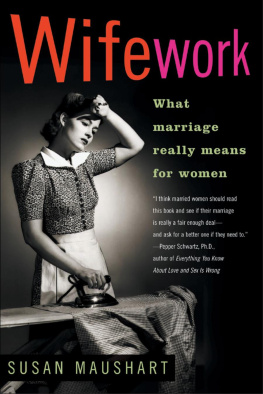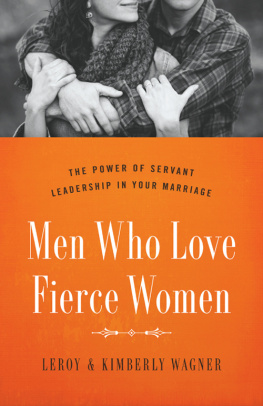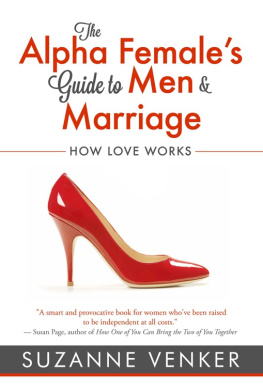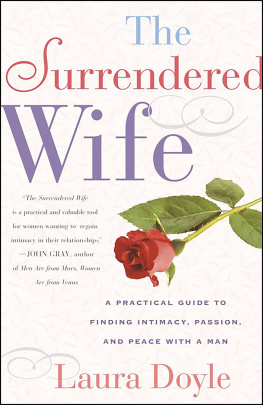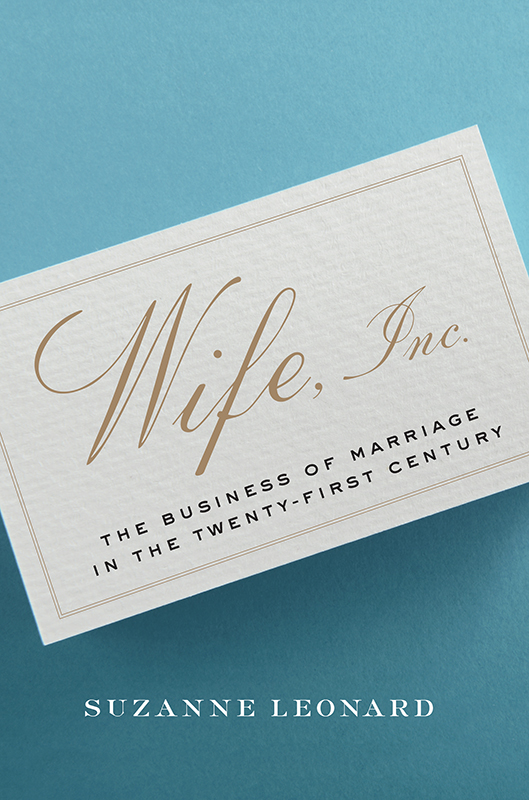
Wife, Inc.
CRITICAL CULTURAL COMMUNICATION
G ENERAL E DITORS : Jonathan Gray, Aswin Punathambekar, Nina Huntemann
F OUNDING E DITORS : Sarah Banet-Weiser and Kent A. Ono
Dangerous Curves: Latina Bodies in the Media
Isabel Molina-Guzmn
The Net Effect: Romanticism, Capitalism, and the Internet
Thomas Streeter
Our Biometric Future: Facial Recognition Technology and the Culture of Surveillance
Kelly A. Gates
Critical Rhetorics of Race
Edited by Michael G. Lacy and Kent A. Ono
Circuits of Visibility: Gender and Transnational Media Cultures
Edited by Radha S. Hegde
Commodity Activism: Cultural Resistance in Neoliberal Times
Edited by Roopali Mukherjee and Sarah Banet-Weiser
Arabs and Muslims in the Media: Race and Representation after 9/11
Evelyn Alsultany
Visualizing Atrocity: Arendt, Evil, and the Optics of Thoughtlessness
Valerie Hartouni
The Makeover: Reality Television and Reflexive Audiences
Katherine Sender
Authentic: The Politics of Ambivalence in a Brand Culture
Sarah Banet-Weiser
Technomobility in China: Young Migrant Women and Mobile Phones
Cara Wallis
Love and Money: Queers, Class, and Cultural Production
Lisa Henderson
Cached: Decoding the Internet in Global Popular Culture
Stephanie Ricker Schulte
Black Television Travels: African American Media around the Globe
Timothy Havens
Citizenship Excess: Latino/as, Media, and the Nation
Hector Amaya
Feeling Mediated: A History of Media Technology and Emotion in America
Brenton J. Malin
Making Media Work: Cultures of Management in the Entertainment Industries
Edited by Derek Johnson, Derek Kompare, and Avi Santo
The Post-Racial Mystique: Media and Race in the Twenty-First Century
Catherine R. Squires
Sounds of Belonging: U.S. Spanish-language Radio and Public Advocacy
Dolores Ins Casillas
Orienting Hollywood: A Century of Film Culture between Los Angeles and Bombay
Nitin Govil
Asian American Media Activism: Fighting for Cultural Citizenship
Lori Kido Lopez
Struggling for Ordinary: Media and Transgender Belonging in Everyday Life
Andre Cavalcante
Homegrown: Identity and Difference in the American War on Terror
Piotr M. Szpunar
Wife, Inc.: The Business of Marriage in the Twenty-First Century
Suzanne Leonard
Wife, Inc.
The Business of Marriage in the Twenty-First Century
Suzanne Leonard

NEW YORK UNIVERSITY PRESS
New York
NEW YORK UNIVERSITY PRESS
New York
www.nyupress.org
2018 by New York University
All rights reserved
References to Internet websites (URLs) were accurate at the time of writing. Neither the author nor New York University Press is responsible for URLs that may have expired or changed since the manuscript was prepared.
Library of Congress Cataloging-in-Publication Data
Names: Leonard, Suzanne, author.
Title: Wife, Inc. : the business of marriage in the twenty-first century / Suzanne Leonard.
Description: New York : New York University Press, [2018] | Series: Critical cultural communication | Includes bibliographical references and index.
Identifiers: LCCN 2017037993 | ISBN 9781479874507 (cl : alk. paper)
Subjects: LCSH: MarriageUnited StatesHistory21st century. | WivesUnited States. | Marriage in popular culture.
Classification: LCC HQ536 .L46 2018 | DDC 306.810973dc23
LC record available at https://lccn.loc.gov/2017037993
New York University Press books are printed on acid-free paper, and their binding materials are chosen for strength and durability. We strive to use environmentally responsible suppliers and materials to the greatest extent possible in publishing our books.
Manufactured in the United States of America
10 9 8 7 6 5 4 3 2 1
Also available as an ebook
For Alan
To passions and aspirations, past, present, and those to come
Contents
The Wife Industry
The premise of FYIs Married at First Sight (2014 ) was stark but simple: agreeing to leave matrimonial decisions up to so-called science, the shows six principals acquiesced to marrying a stranger, sight unseen. Relying on metrics such as in-depth personality profiles, attractiveness rating scales, and home visitsor what the show repeatedly termed sophisticated instrumentsMarried at First Sights experts (a psychologist, a sexologist, a sociologist, and a spiritual adviser) selected mates from the shows contestants. As implied, prospective spouses literally meet at the altar. Rationalizing her appearance on the show, one participant argued that dating is difficult because etiquette has changed. People use text messages or online communication, she lamented, losing that face-to-face connection. Its a serious experiment, confirmed sociologist Dr. Pepper Schwartz. This might be an antidote to a chaotic dating system that is really tiring people out. Performing an end run around the vagaries of choice and intent, as well as sparing participants the awkwardness of failed first dates, Married at First Sight is perhaps the answer for time-crunched professionals weary of dysfunctional dating climates: in short, the show models how one might outsource the process of finding the one.
Married at First Sight provides apt introduction to Wife, Inc., thanks to its reliance on heuristics of efficiency, a supposedly scientific approach to coupling, and a relentless emphasis on the work that participants must undertake to establish their marriages as legitimate. After a month of marriage, spouses decide if they wanted to continue or abandon the arrangement. The show, I assert, is a reminder that American marriage culture has been radically reenvisioned in the twenty-first century, an alteration we can credit in part to the notion that marriage is the sort of business that must be gotten down to, much like one might decide
Theorizing the rationalized understandings of marriage newly embedded in the cultural fabric of twenty-first century America, Wife, Inc. attempts to untangle them via an in-depth analysis of female media culture. Specifically, it attends to popular television, film, and literature, as well as mass-market news, womens magazines, new media, and advice culture in order to understand these developments. While the systems I reference involve both men and women, the position of women vis--vis marital cultures is the more pronounced of the two, particularly as the term wife has gained increased traction. Though the prevalence of the moniker might suggest otherwise, for women especially, the institution of marriage has changed dramatically in the past forty years. For one, the inequities with respect to labor, economics, and domesticity that once bespoke womens disadvantage have given way to a host of social upheavals and liberal progress. The sort of second-class citizen designation that wives once faceda positionality that helped to ignite a feminist critique of the marital institution during both the first and second waveshas receded in a postfeminist era where womens gains are widely touted. Understandings of the need for equality in both the home and in professional spaces have been largely mainstreamed though not, of course, necessarily realized. As a result, nowadays it feels downright anachronistic to suggest that a womans sexual needs could only be met in marriage, that men are necessary for procreation, or that women must do the lions share of the emotional, domestic, or physical work it takes to support a functioning household. Both romantic and practical, American marriages are widely understood to be based on equal partnership, economic solvency, and romantic love, renegotiations that have benefited women in particular.
Next page


